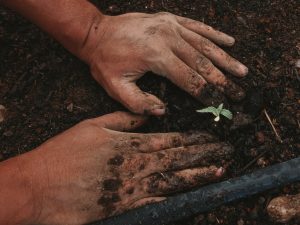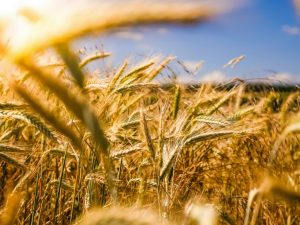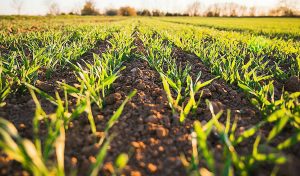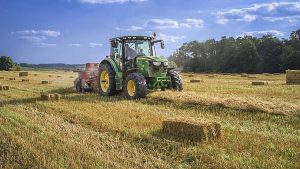Ways of Controlling Harmful Farm Insects: Insects are considered as pests for so many reasons which could include the direct damage of plants in the farm through the process of feeding on them.
Harmful insects are those species of insects which cause damage to humans, livestock, plants, and possession worldwide. These insects are categorized in many ways, some could be direct pests which attack the host, could be plant or animal; by either sucking the sap of the plant or the blood or tissue of the animal.

The indirect pests are the ones which are responsible for the transmission of disease carrying pathogens or parasites, which disturb the life of the animal or plant. In causing damages, sometimes it could be the adult insect which inflicts the damage on the host, the other time, it could be the larval (caterpillar, maggot, etc.). In other cases, it could both be the larva and the adult insect that cause the damage and they may do so together or separately.
With the above explanations and definitions, we have come to understand that harmful farm insects are those insects which attack farm animals and plants in the farm and not human.
Recommended: Differences Between Subsistence and Commercial Agriculture
10 Ways Of Controlling Harmful Farm Insects
The best way of controlling farm insects is through prevention; however, one can never be too careful therefore has to take absolute care in handling farm insects in other not to damage farm produce. Ways of controlling harmful farm insects are:
1. Crop Rotation: Crop rotation is the process by which the farmer plants different crops on the farm each season, an example is when he cultivates maize this season and in the next he plants cassavas. The act of crop rotation involves the removal of crops that are prone to a particular pest with another crop that is not prone to that pest on rotational basics.

An example is a corn rootworm larvae which could be starved out following a crop rotation of non-host crop like soybeans, oats, alfalfa for a period of one or two years. This method works best in large farm area where the pests cannot easily move from its current location to the new location of the rotated crop, as a result of this, this method has limited applicability to garden insect pests.
Also see: Most profitable skills to learn in 2022
2. Sanitation: Sanitation is the process of keeping an environment clean. Therefore, sanitation in this context refers to the keeping clean of the area where plant and animal are being kept which may harbor pests and also keeping clean of the farm equipments and machines.

An example of such sanitation activity includes the removal of weeds in the green house that may harbor aphids, whiteflies, or mites; the destruction of crop residues such as corn stubble, squash vines, etc which may be overwintering sites for insects or pests; the cleaning of equipments which could spread insects from one place to the other.
Also see: Advantages and Disadvantages of Being a Teacher
3. Trap Cropping: Trap cropping just like setting a trap for a rat in other to prevent it from invading your home, trap cropping is the process whereby another plant is planted together with the plants which is wished to be protected and diverting the attention of the insects from the main plant. In another term, it is the provision of a more preferred food for the insect in the farm in other to lure the insect away from the main crop. An example is the cultivation of squash near cucumbers in other to divert the attention of the pickleworms.

4. Host Resistance: Host or plant resistance has been effectively used for many decades in reducing the impact of pests. Some farm plant does have some physical and chemical adaptation components which allow them to repel or even kill farm insects.

Farmers on the other hand use such process and even try to improve these plants in other to be more resistant and to develop crops which are too. A lot of varieties of important crops are being grown today such as, rice, corn apples, etc, and they are resistant to one pest or the other or more than one pest.
Also see: Major Tools for economic analysis
5. Physical Controls: The method of physical control is one which physically keeps the pest away from the host, barriers which includes window screens, floating row covers, and plant collars helps in putting the pest away.

A lot of varieties of traps could be used for the monitoring and the control; they are things like glue board traps for apple maggots. Codling moth larvae could be caught with cardboards wrapped around apple trees; the bands will then be removed and destroyed.
6. Mechanical Control: This method kills or removes a pest directly and immediately. They could be rapid and very effective and is mostly suited for small acute pest, and it’s popular with gardeners and homeowners.

This method is mainly has a little impact on the beneficial natural enemies of the pests and other non-target organisms and it is therefore well suited for use with biological control in a well integrated pest management approach.
Also see: Doctors and Teachers, who are more important in the society?
7. Biological Control: This mood of control is done by the use of beneficial organisms to control pests. Centuries ago, the Chinese farmers found out that ants were and could be used to control pests in their citrus orchards by feeding on the caterpillars, leaf feeding bugs and beetles, they realized that if they collected specific types of ants on paper from other places and introduced them to the farm, it will help greatly in reducing the pest infestation.
They also provided bamboo paths for the ant in other to enable them move freely from and to connect themselves from tree to tree. This ant method became the first recorded biological control to be recorded. This form of control involves the introduction of harmless predators to the farm in other to reduce or eradicate the pests therein.
8. Chemical Control: Chemical control seems to be among the most common way of removing harmful insects. The use of chemicals involves the introduction of chemicals into the farm in other to kill the pests or inhabit their feeding, mating, or other essential behaviors. The chemicals used here can be natural products, synthetic mimic of natural products or purely synthetic chemicals.
Some chemicals are not toxic to insects but interfere with their normal behaviors thereby keeping them from causing damage. An example of such is the normal mosquito repellant we all know. Other chemicals however, are set to kill the pests and be done with it, without any plan of suspending their activities.
Also see: Strongest Animals in the World 2022
9. Integrated Pest Management (IPM): This form of pest management involves blending all the pest eradication methods into one and executing it. Those who use this method realize that it is nearly impossible to eradicate all pests; however, pest control could be managed below the economically damaging levels.
The method of IPM is dynamic and varies by the nature of the plant, farm, and pest however; they know the appropriate method to use in eradicating or controlling a particular pest.
10. Plant Disposition: Another method which could be used in eradicating harmful farm insects is by disposing of damaged plant in the farm. This is done by identifying the infected plant and pulling it out then putting it away from the garden in other to stop the pests from spreading in the farm or garden.
Also see: Weakest Animals in the planet explained
Eradication of harmful farm insects (pests) could be a very tedious work as many pests are simply stubborn and difficult to eradicate. However with proper method, diligence and prevention, those pests would best be on their way to another farmland looking for food.

Edeh Samuel Chukwuemeka, ACMC, is a lawyer and a certified mediator/conciliator in Nigeria. He is also a developer with knowledge in various programming languages. Samuel is determined to leverage his skills in technology, SEO, and legal practice to revolutionize the legal profession worldwide by creating web and mobile applications that simplify legal research. Sam is also passionate about educating and providing valuable information to people.